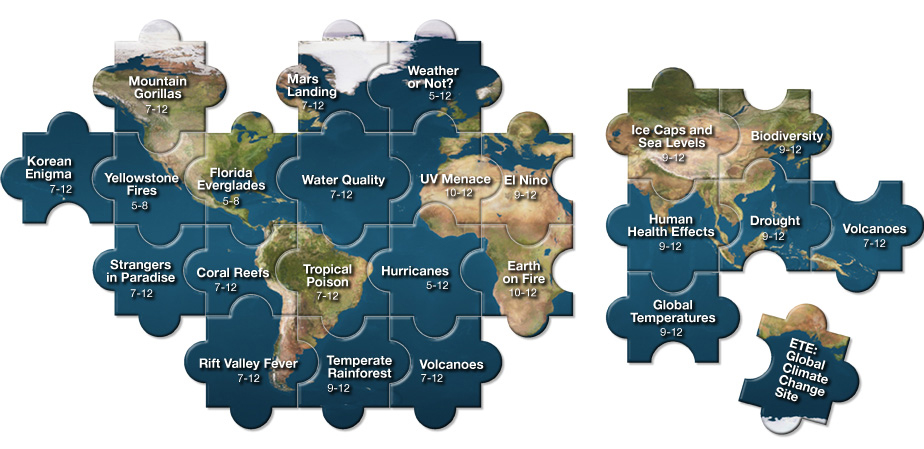Using climate science models and NASA satellite images and data sets, students apply problem solving methods and scientific inquiry skills to address six different climate-related scenarios.
The Exploring the Environment legacy modules include four variations on problem-based learning—activities, basic, comprehensive, and advanced. The legacy Exploring the Environment™ modules have been available and used by teachers for more than 10 years. We continue to offer these modules, because the basic premise behind the module scenarios and tasks continue to attract teacher interest.
Each of the student problem-based learning scenarios also includes a teacher page to help educators implement the modules into their classroom teaching. Access to all of the materials is free. Our only request is that teachers who use our modules register for the site to access the module-specific teacher pages and complete a post-event survey.
The Earth Science Explorer has two floors. The Earth floor presents Earth science fundamentals, such as cycles, spheres, and geologic time. The Dinosaur floor examines dinosaur extinction and some of the hypotheses that might explain it. The Teacher Lounge gives educators an overview of the topics and activities available and how they can use these with young Earth science explorers.
The K-4 Earth Science modules are divided into four areas: Biomes; Weather, Seasons, and Climate; Remote Sensing; and Earth System.
Whether you’re new to problem-based learning or have extensive experience using this type of instructional approach, we encourage you to view our Problem-based Learning pages. Teachers, share your feedback on our modules and ideas by emailing ete-gcc@cet.edu.
Problem-based learning is designed to stimulate discussion within classes, among teachers, with scientists, and across communities. Please comment on our blog postings and contact nasatalk@cet.edu if you would like to post a guest blog on the NASATalk Exploring Climate Change collaborative.



 CET | ETE-GCC | ETE Awards
CET | ETE-GCC | ETE Awards